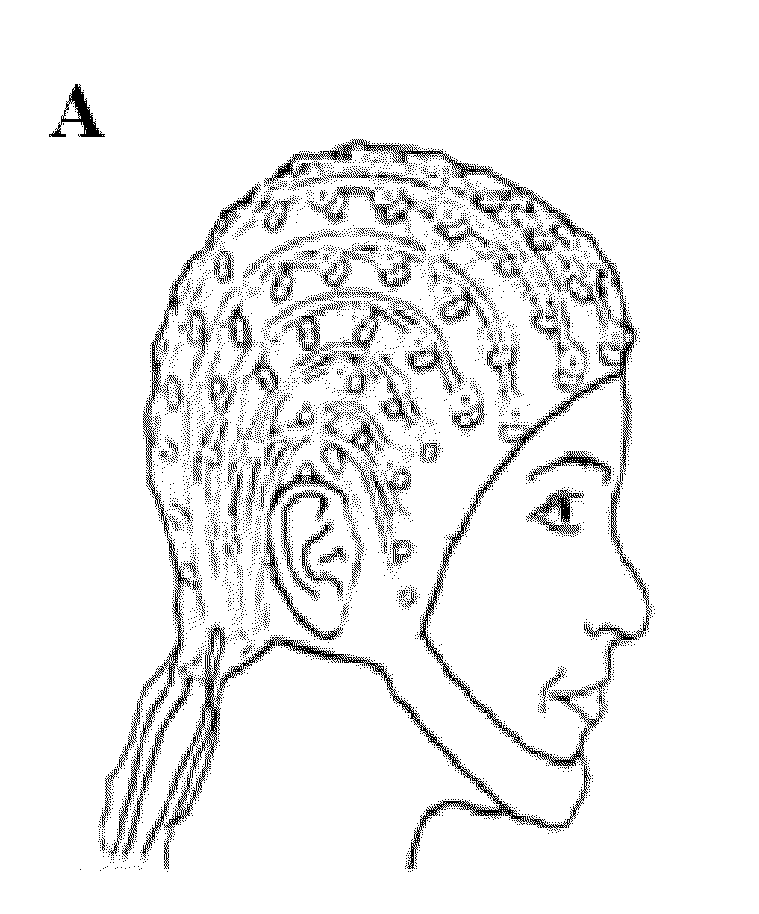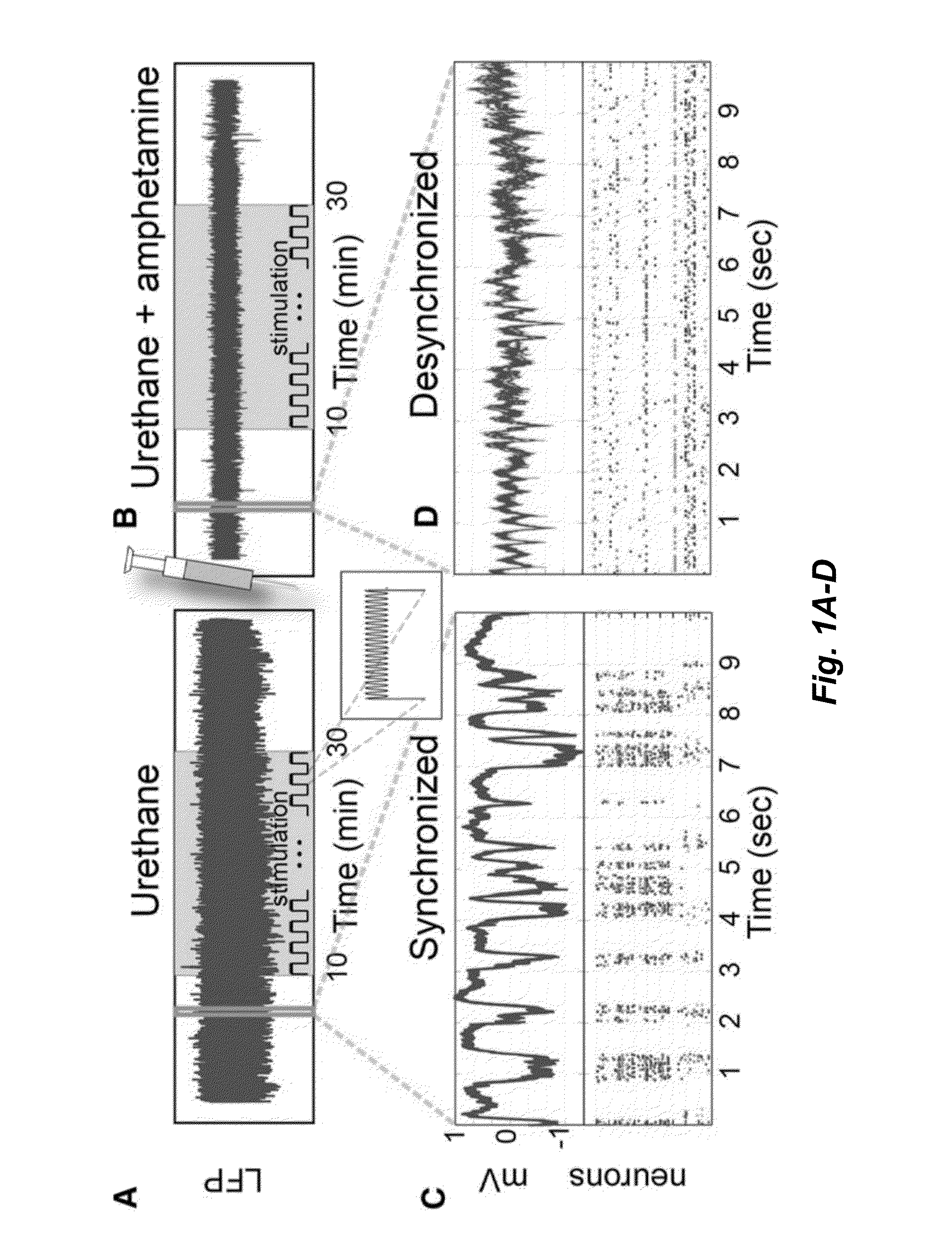Brain state dependent therapy for improved neural training and rehabilitation
- Summary
- Abstract
- Description
- Claims
- Application Information
AI Technical Summary
Benefits of technology
Problems solved by technology
Method used
Image
Examples
example 1
Sequential Neural Activity Patterns Evoked by Sensory Stimulation are Enhanced During Cortical Desynchronization
[0099]Example Summary.
[0100]Recently, Applicant have shown that brain plasticity could be linked to desynchronized (attentive-like) brain state regardless of method used to desynchronize cortical activity (Bermudez et al., (2013) Neuron 79, 555-566). Those findings suggest novel view on plasticity, namely that plasticity mostly depends on general state of neural network. Here, Applicant propose method and device based on the above idea to improve learning and brain recovery from neurological disorders.
[0101]Interestingly, it was shown that under general anesthesia that induces brain synchronization, it is possible to also induce periods of desynchronized brain activity using variety of different methods (see FIG. 6 for an example of neuronal spiking patters in synchronous and desynchronous brain states). For example, it can be achieved with tail pinch, infusion of carbacho...
example 2
Direct Current Stimulation Improves Limb Use after Stroke by Desynchronizing the Brain State
[0150]Example Summary.
[0151]Applicant collected multiple sets of preliminary data to more directly investigate relation between brain synchrony and stroke recovery (plasticity). For those experiments Applicant have chosen to use transcranial direct current stimulation (tDCS) method which was shown to improve stroke recovery and which can directly affect neuronal excitability. Briefly, with tDCS a constant, low current is applied directly to the brain using electrodes placed on the surface of the scalp above areas of interest. Effects of stimulations depend on polarity of electrode: anodal stimulation increases firing rate and the excitability of cortical neurons, and cathodal stimulation has opposite effect. The mechanisms by which tDCS affects brain are not fully understood but number of possible mechanisms including local changes in ionic concentrations, alterations in transmembrane protein...
example 3
Improving Stroke Recovery Therapy
[0188]Following a stroke, patients often must undergo physical and / or mental therapy to regain lost functional ability. Typically, rehabilitation is a slow process requiring daily training over a period of months or years. Embodiments of the present disclosure can significantly reduce the time and effort necessary to achieve similar or improved results as comparing to standard therapy (which is currently administer during times which may not be optimal for brain modification). For example, a patient can be configured to wear an EEG-based device to monitor brain state during rehabilitation. An EEG-based device can provide information regarding optimal times for training during which the brain is in the most desynchronized (plastic) state. This information can be displayed to a patient in, for example, a numerical score ranging from 1 to 10 (where 10 indicates most desynchronized brain state). Thus, a patient can chose to perform the most difficult exe...
PUM
 Login to View More
Login to View More Abstract
Description
Claims
Application Information
 Login to View More
Login to View More - R&D
- Intellectual Property
- Life Sciences
- Materials
- Tech Scout
- Unparalleled Data Quality
- Higher Quality Content
- 60% Fewer Hallucinations
Browse by: Latest US Patents, China's latest patents, Technical Efficacy Thesaurus, Application Domain, Technology Topic, Popular Technical Reports.
© 2025 PatSnap. All rights reserved.Legal|Privacy policy|Modern Slavery Act Transparency Statement|Sitemap|About US| Contact US: help@patsnap.com



